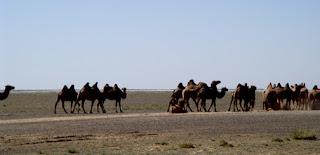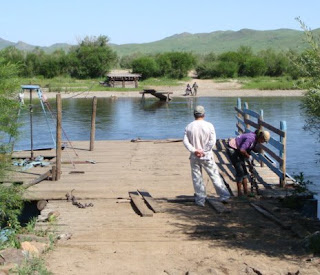

Early, early, early the next morning we were up, watching the sun rise as we headed out for the singing sands dunes in preparation for climbing to the top. It had been up in the 40’s (that’s over 100 degrees) the last few days and we wanted to make the climb in the relative cool of the morning. Oh my gosh! Was it every a climb! Every step dropped back half of what you thought you gained. The slope was STEEP in places. Sometimes you could only take 10 steps before you stopped to catch your breath. And the top – it seemed to move away from you the further you climbed. I honestly thought I’d never get up there but indeed, after an hour of grueling work, we made it. The view was spectacular and, ironically, once you made it to the top the walking was (relatively) easy on the crest. It was well worth the exertion to do it.
Brad was in his element on the dunes. He had been planning the pictures he wanted, the poses he wanted, the angles, everything that goes into a shot. We were his primary human targets, though shifting sand, bugs, insects and plants also had their time in the limelight. The pictures he took were stunning –mine are only the home grown quality things. They’re fun to take but they aren’t going to win any prizes.
Now, you might as why it was called the singing sands dunes. We had wondered on the way up since we heard nothing that would give it that name. Even Chaagii had seemed surprised because the shifting sands failed to make any sounds. However, as we started down the slope, sliding into huge pockets as we quickly traversed down the dune, we heard a hum every time we slid our foot into the sand. It really was cool to listen to it as we slid down the dune.






















































